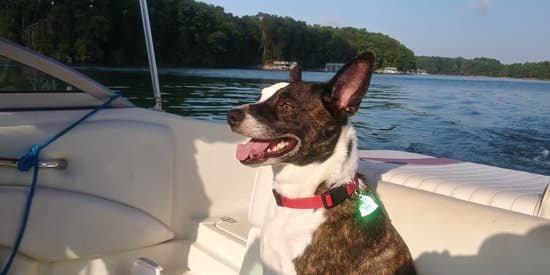Dogs can be adorable companions, but it can be frustrating when they have a tendency to tear everything in sight. In this article, we will explore the reasons behind this destructive behavior and provide effective strategies to train your dog. Understanding why dogs engage in destructive chewing is crucial in addressing the issue. By identifying common triggers such as anxiety, boredom, or lack of exercise, we can better address the root cause of this behavior.
Preparation is key when training a dog that tears everything. Creating a dog-proof environment involves removing valuable or dangerous items from their reach and confining them to a safe area using baby gates or crates. Providing appropriate chew toys and mental stimulation also helps redirect their behavior onto acceptable objects.
In order to teach your dog what’s acceptable, positive reinforcement techniques play a significant role. Introducing them to appropriate objects to chew on while simultaneously discouraging destructive chewing assists in reshaping their behavior patterns. By incorporating puzzle toys for mental stimulation, you keep their minds engaged and occupied.
By understanding the reasons behind destructive chewing and implementing the strategies mentioned above, you can effectively train your dog out of tearing everything. Consistency, patience, and persistence are key throughout the training process. Let’s delve deeper into these topics and take a closer look at how each strategy can contribute to shaping your furry friend’s behavior.
Preparation
In order to effectively train a dog that tears everything, it is essential to create a dog-proof environment. This section will provide guidance on setting up the right environment for your dog to prevent destructive behavior.
The first step in preparing a dog-proof environment is to remove any valuable or dangerous items from the dog’s reach. Dogs may chew on items that they find interesting or that smell like their owners, so it’s important to keep these items out of their reach. This can include anything from shoes and clothing to household objects such as remote controls or cables.
To confine the dog to a safe area, you can use baby gates or crates. Baby gates can be used to block off areas of the house where the dog should not have access, such as rooms with valuable furniture or delicate objects. Crates can provide a secure and comfortable space for the dog when they are unsupervised, helping to prevent destructive behavior.
In addition to removing items and using barriers, it is crucial to provide appropriate chew toys and mental stimulation for your dog. Chew toys can redirect their chewing behavior towards acceptable objects, such as dental chews or puzzle toys specifically designed for dogs.
These toys help keep them entertained and satisfy their natural urge to chew. Mental stimulation is equally important in preventing destructive behavior, so consider incorporating activities like interactive feeding puzzles or treat-dispensing toys into your dog’s daily routine.
By creating a well-prepared, dog-proof environment with suitable chew toys and mental stimulation opportunities, you are setting your dog up for success in learning what is acceptable behavior and what should be avoided. It may take time for them to adjust and learn these boundaries, but with patience and consistency, your efforts will pay off in minimizing destructive chewing habits.
| Preparation: Setting up a Dog-proof Environment |
|---|
| – Remove valuable or dangerous items from the dog’s reach |
| – Use baby gates or crates to confine the dog to a safe area |
| – Provide appropriate chew toys and mental stimulation |
Redirecting the Behavior
When dealing with a dog that tears everything, it is important to redirect their behavior towards more appropriate outlets. This section will focus on teaching your dog what is acceptable to chew on and providing them with mental stimulation. By introducing positive reinforcement techniques, showing them appropriate objects to chew on, and encouraging the use of puzzle toys for mental stimulation, you can effectively redirect their destructive behavior.
One effective way to redirect your dog’s behavior is through the use of positive reinforcement techniques. Dogs respond well to positive reinforcement, which involves rewarding their good behavior with treats, praise, or toys. When your dog chews on an appropriate object or engages in other desirable behaviors, immediately reward them with a treat and verbal praise. This reinforces the idea that chewing on those specific items is acceptable and pleasurable for them.
In addition to positive reinforcement, it is crucial to show your dog what they are allowed to chew on. Provide a variety of appropriate chew toys made specifically for dogs, such as rubber bones or interactive toys filled with treats. These toys should be enticing enough to keep your dog engaged and distracted from destructive chewing behaviors. Additionally, regularly rotate the available toys to keep them interesting for your furry friend.
Mental stimulation is just as important as physical exercise for dogs who engage in destructive chewing behaviors. Dogs need mental challenges in order to stay mentally stimulated and prevent boredom. Puzzle toys are excellent options for providing mental stimulation as they require dogs to work out how to access treats or rewards hidden inside them. Incorporating puzzle toys into your dog’s routine can help occupy their mind and decrease their desire to tear things apart.
By implementing these strategies and consistently reinforcing appropriate behavior, you can effectively redirect your dog’s destructive tendencies towards more acceptable actions. Remember that training takes time and patience; celebrate small victories along the way and don’t give up easily. Redirecting your dog’s behavior is a gradual process, but with persistence and consistency, you can teach your furry companion what they are allowed to chew on and provide them with mental stimulation in a healthy way.
Consistency is Key
When it comes to training a dog that tears everything, consistency is essential. Dogs thrive on routine and structure, so establishing a clear set of rules will help your furry friend understand what is expected of them. Here are some steps you can take to ensure consistency in your training:
- Create a consistent routine for the dog: Dogs feel more secure when they have a predictable daily routine. Set regular times for feeding, exercise, playtime, and training sessions. Stick to these scheduled activities as closely as possible, as it will help your dog understand what is expected of them and reduce their anxiety.
- Clearly define boundaries and expectations: It’s important to establish clear boundaries for your dog so they know what they can and cannot do. For example, if you don’t want your pup on the furniture, make sure that rule is consistently enforced by redirecting them to their own designated spot or using visual cues like “off.” Consistently reinforcing these boundaries will help prevent destructive behavior.
- Apply consistent discipline techniques: When your dog engages in destructive behavior, it’s crucial to respond with consistent discipline techniques. This doesn’t mean resorting to punishment or harsh methods but rather redirecting their attention to appropriate behaviors or objects. For instance, if you catch them chewing on an inappropriate item, calmly remove it and replace it with an approved chew toy. Consistency in how you respond to their actions will reinforce what is acceptable behavior.
By establishing clear rules and consistently enforcing them, you are providing structure and guidance for your dog during their training journey. It may take time for them to fully grasp the expectations but remain patient and persistent throughout the process.
Remember that every small victory should be celebrated as progress towards breaking the habit of tearing everything apart. With time and effort, along with maintaining consistency in your approach, you will see positive changes in your dog’s behavior. Don’t give up – your dedication will pay off and lead to a happier, well-trained canine companion.
Exercising the Energy
Physical exercise is crucial for dogs with destructive behaviors, as it helps them release pent-up energy and reduces their inclination to engage in destructive chewing. Regular exercise sessions can tire out a dog both mentally and physically, making them less likely to resort to destructive behavior. It is essential to ensure that dogs receive sufficient physical exercise every day.
Recommend regular daily exercise sessions
One of the most effective ways to prevent destructive chewing due to excess energy is through regular daily exercise. Dogs should engage in activities that get their heart rate up and make them pant, such as brisk walks, jogs, or runs. The duration and intensity of the exercise sessions depend on the dog’s age, breed, health condition, and individual needs.
High-energy breeds may require more intense workouts or longer periods of exercise compared to low-energy breeds. Prioritize providing your dog with at least 30 minutes to an hour of physical activity each day.
Discuss the importance of mental stimulation
In addition to physical exercise, mental stimulation plays a vital role in preventing destructive behaviors. Dogs need mental challenges to keep their minds engaged and stimulated. Obedience training sessions are an excellent way to provide mental stimulation while also reinforcing good behavior.
Interactive puzzle toys are another great option that encourages problem-solving skills. These toys typically hide treats or require the dog to manipulate certain parts of the toy to access rewards. Mental stimulation can tire a dog out just as much as physical exercise.
Provide ideas for brain games or enrichment activities
Engaging your dog in brain games and enrichment activities not only provides mental stimulation but also helps redirect their focus from destructive behavior onto appropriate tasks. Some examples of brain games include hiding treats throughout the house for your dog to find or teaching them new tricks through positive reinforcement training methods.
Enrichment activities can involve providing food-dispensing toys or even creating homemade obstacle courses using household items. When engaging in brain games or enrichment activities, ensure that they are safe and suitable for your dog’s size, breed, and overall health.
By incorporating regular physical exercise and mental stimulation into a dog’s routine, you can effectively manage their destructive behavior. These activities not only tire them out physically but also provide the necessary mental challenges to keep them engaged and content. Remember that each dog is unique, so it may require some trial and error to find the right balance of exercise and mental stimulation for your furry friend.
Managing Separation Anxiety
Separation anxiety is a common issue that many dogs suffer from, and it often manifests in destructive behaviors when left alone. Dogs with separation anxiety may become anxious, stressed, or panic when separated from their owners. This can lead to destructive behavior such as chewing on furniture, walls, or other household items. It’s important for dog owners to understand and address separation anxiety in order to effectively manage destructive behavior when the dog is left alone.
Identifying signs of separation anxiety in dogs
Recognizing the signs of separation anxiety is crucial for understanding if your dog is suffering from this condition. Some common signs include excessive barking or howling after being left alone, destructive behavior targeted towards exit points like doors and windows, pacing or restlessness, urinating or defecating in the house even when house trained, and displaying clingy behavior whenever you’re around.
Implementing gradual desensitization techniques for alone time
One approach to managing separation anxiety is desensitization training. Desensitization involves gradually exposing your dog to being alone in a controlled and positive way. Start by leaving your dog alone for short periods of time – just a few minutes at first. Gradually increase the duration as your dog becomes more comfortable being left alone. During these training sessions, be sure to provide plenty of mental stimulation such as puzzle toys to keep your dog occupied while you’re away.
Considering the use of calming aids or professional help if necessary
If desensitization techniques are not enough to alleviate your dog’s separation anxiety, there are other options worth considering. Calming aids such as pheromone diffusers or sprays can help create a soothing environment for your dog. These products mimic natural pheromones that help reduce stress and anxiety in dogs.
In more severe cases of separation anxiety, professional help may be necessary. A professional dog trainer or behaviorist can work with you and your dog to develop a customized training plan to address the separation anxiety and associated destructive behaviors. They can provide guidance on desensitization techniques and recommend additional strategies or tools that may be effective in managing your dog’s separation anxiety.
By understanding the signs of separation anxiety, implementing desensitization techniques, and seeking professional help when needed, dog owners can effectively manage destructive behavior caused by separation anxiety. It’s important to remember that addressing separation anxiety takes time and patience, but with consistency and persistence, it is possible to minimize destructive behaviors and create a more peaceful environment for both you and your furry friend.
Seeking Help
While many dog owners are successful in training their dogs to stop tearing everything, there are some cases where seeking professional help becomes necessary and beneficial. Professional trainers or behaviorists have the expertise and experience to address more complex behavioral issues and can provide guidance tailored to your specific situation. This section will explore when it may be necessary to consult a professional, recommend local resources for professional assistance, and highlight the benefits of specialized training programs.
There are several scenarios where seeking help from a professional trainer or behaviorist is highly recommended. If your dog’s destructive behavior is severe, persistent, or escalating despite your efforts, it may indicate an underlying issue that requires the expertise of a professional. Additionally, if you feel overwhelmed or frustrated by the training process and unsure of how to effectively address the problem, seeking professional assistance can alleviate stress for both you and your dog.
Fortunately, there are various resources available for finding qualified professionals in your area. One option is to ask your veterinarian for recommendations as they often have connections with reputable trainers and behaviorists. Local pet stores or animal shelters may also have valuable information on professionals who specialize in dealing with destructive behavior in dogs.
When choosing a professional trainer or behaviorist, it is essential to ensure they have relevant qualifications and certifications. Look for individuals who have undergone formal education and training in animal behavior or psychology. Reviews from other clients can also provide insight into their success rate and effectiveness.
Specialized training programs offered by professionals can offer significant benefits when dealing with dogs that tear everything. These programs typically include comprehensive assessments, individualized training plans, ongoing support, and a multi-faceted approach that addresses not only the behavior but also its root causes. Professional trainers and behaviorists have the knowledge and tools to develop targeted strategies for modifying your dog’s destructive behaviors effectively.
By seeking help from a professional trainer or behaviorist, dog owners can gain invaluable guidance and support in addressing destructive behavior. These experts can provide valuable insights, effective training techniques, and personalized advice to help both you and your furry friend overcome the challenges of destructive chewing. Remember that seeking professional help is not a sign of failure but rather a proactive step towards achieving long-term behavioral change.
Patience and Persistence
Training a dog that tears everything can be a frustrating and challenging process, but with patience and persistence, it is possible to see progress. Understanding the training process is essential for both the dog owner and the dog. It is important to remember that training takes time and effort, and setbacks are normal. By acknowledging these factors and staying committed to the process, success can be achieved.
One of the key elements of understanding the training process is recognizing the importance of patience and consistency. Dogs learn through repetition and reinforcement, so it is important to consistently apply the training techniques and rules that have been established.
This means setting aside time each day for training sessions, using positive reinforcement techniques, and providing consistent discipline when necessary. It may be tempting to give up or become frustrated when progress seems slow, but by remaining patient and persistent, breakthroughs can happen.
It is also important to acknowledge that training a dog takes time and effort. Every dog is different, and some may require more time to learn than others. It is crucial not to rush the training process or get discouraged if results are not immediate. Celebrating small victories along the way can help keep motivation high and make the overall experience more enjoyable.
In conclusion, patience and persistence are vital when training a dog that tears everything. Understanding that training takes time, effort, and consistency will set realistic expectations for both the owner and the dog. By celebrating small victories along the way, staying committed to consistent training techniques, and remaining patient even during setbacks, owners can effectively train their dogs out of destructive behavior.
Frequently Asked Questions
How do I get my dog to stop tearing up everything?
To get your dog to stop tearing up everything, it is important to identify the underlying reason for this behavior. Dogs sometimes engage in destructive chewing out of boredom, anxiety, or teething. Providing mental and physical stimulation is crucial to redirect their destructive tendencies. Ensure your dog gets enough exercise through walks, playtime, and interactive toys.
Additionally, offer appropriate chew toys that can keep them occupied. It might be necessary to confine your dog to a safe space when you’re not around or use deterrents like bitter apple spray on items they frequently target. Consistency in training and positive reinforcement when they chew on acceptable items will also help teach them what is appropriate.
Will my dog ever stop tearing stuff up?
Whether or not your dog will eventually stop tearing stuff up largely depends on the individual dog and the efforts put into addressing the behavior. With patience, training, and proper management techniques, most dogs can learn alternative behaviors and reduce their destructive tendencies significantly or even completely.
Consistency in implementing preventive measures such as confinement, providing appropriate outlets for chewing, stimulating activities, and addressing any underlying issues like anxiety can help in stopping this behavior over time.
Can separation anxiety in dogs be cured?
While separation anxiety in dogs may not necessarily be “cured” permanently in all cases, it can be effectively managed so that both you and your furry friend feel more at ease when apart. Professional help from a veterinarian or animal behaviorist might be beneficial for severe cases of separation anxiety as they can create tailored management plans based on your dog’s specific needs. Techniques often involve gradually desensitizing the dog to separation through short practice departures and counter-conditioning exercises using positive reinforcement training methods.
Providing comfort items like toys or clothing with your scent may also help ease their anxiety during absences. It is essential to remain patient throughout the process as treating separation anxiety can take time and dedicated effort from both you and your canine companion

Welcome to the blog! I am a professional dog trainer and have been working with dogs for many years. In this blog, I will be discussing various topics related to dog training, including tips, tricks, and advice. I hope you find this information helpful and informative. Thanks for reading!





